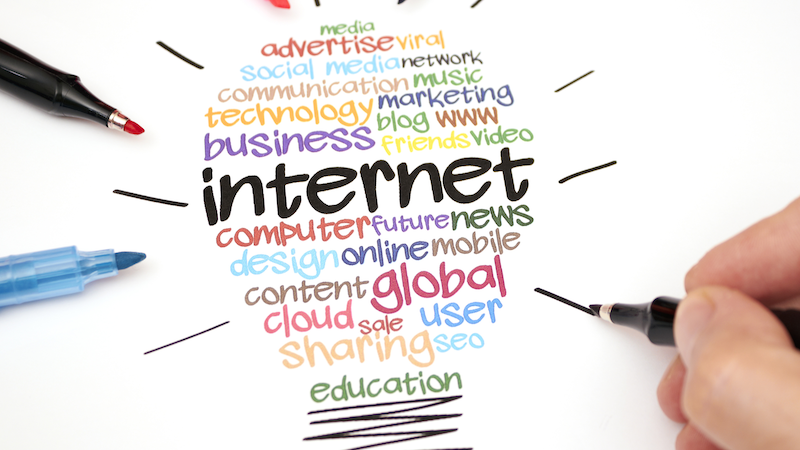Communication technology helps us share information. From telephones to social media and virtual reality, these technologies transform communication.
What is Communication Technology?
Communication technology is the tools used to make, send, save, and exchange information. We use communication technologies very often. Smartphone is an important example of communication technology.

Types of Communication Technology
Communication technology changes how we communicate. There are 4 main types of communication technology: Telephone, Television, Radio, and Internet.
Telephone
Telephone became the most widely used telecommunications device in the world. It provides a quick and personal way to communicate via voice. The mobile phone came, marking a significant human invention. Then, “smartphone” offers advanced computing capabilities like text messaging, email, and Internet access, which transforms communication.
Television
Television is a medium that transmits both moving images and sound, allowing broadcasts to reach large audiences worldwide, and serving as a potent tool for mass communication.
This communication technology is a primary source for news updates, allowing viewers to witness events happening worldwide in real time. Television provides many entertainment content, including movies, TV shows, series, and reality programs. Besides, Television advertising plays a major role in promoting products and services, influencing consumer behavior, and shaping market trends.
Now television is turning the platform for streaming and video calls. iPhone or iPad users can use Apple’s AirPlay to project a video call onto their TV.
Radio
Radio involves communicating through radio waves, which serve as the basis for technologies like Wi-Fi, Bluetooth, and cellular networks. These waves allow devices to connect wirelessly and communicate with each other.
Radio has long been a key source of entertainment, offering music, talk shows, and more. Radio stations deliver real-time news, music, and information to a wide audience. Local stations also cover community events, and sports, and share region-specific news. Radio signals can reach far, allowing for communication across vast areas, even in remote locations.
Radio is a relatively inexpensive type of communication technology to produce and receive compared to other communication technologies. This makes it accessible to people across various economic backgrounds.
Internet
The Internet has revolutionized communication, including electronic mail, instant messaging, voice over Internet Protocol (VoIP) telephone calls, video calls, blogs, and social networking.
By January 2024, there were 5.35 billion Internet users globally, representing 66.2% of the world’s population. The Internet allows people to work collaboratively at many different locations. Tools like instant messaging, video conferencing, and social media platforms enable real-time communication. Information can be shared instantly, from news updates to personal messages. Online tools like project management platforms and cloud storage enable seamless collaboration across teams and individuals.
Businesses leverage the Internet for email communication, video conferencing, online marketing, and customer service, enhancing efficiency and global reach.

7 Communication Technology Examples
Communication technology shapes how we connect, collaborate, and share information. From blogs and email to video conferencing and virtual reality, these illustrate the diverse ways in which technology enhances communication.
Blog
A blog, short for weblog, is an informational website made up of separate posts. Back in the 2000s, blogs were typically run by one person or a small team, focusing on a specific topic. Over time, they’ve been vital for both individuals and businesses to share updates and information. In 2022, it was estimated that there were over 600 million public blogs among more than 1.9 billion websites.
Blogs can be a valuable source of in-depth information on specific topics. Businesses can use blogs to connect with customers, share company updates, and build stronger relationships. According to a Hubspot survey, 56% of respondents said they ever purchased something from a company after reading a blog post. Moreover, 33% of marketers are using blog posts in their marketing strategy.
Email is a way to send and receive messages electronically. It became widely accessible with email client software like Outlook and web-based email clients such as Gmail, which operate over the Internet.
Even with the rise of mobile messengers and chat apps, email remains a vital aspect of daily online activities. In 2022, there were 4.26 billion global email users, projected to reach 4.73 billion by 2026. Emails can be sent to anyone with an internet connection. They also allow for easy sharing of documents, images, and other files.
Many online users sign up for websites and newsletters using email, but they often face spam and marketing emails. While most are just annoying, some can be malicious and compromise digital security. In 2019, 45% of Internet users reported avoiding opening emails from unknown addresses, showing awareness of potential dangers (Statista).
Video Conferencing
Video conferencing is an online technology that allows users in different locations to hold face-to-face meetings. This communication technology is one of the best ways for remote collaboration. It allows your team to interact with each other in real time, and reduces the need for business travel, saving time and money. Zoom, Google Meet, Microsoft Teams, and Zoho Meeting are among the most popular video conferencing platforms. Microsoft Teams have grown to 320 million monthly active users.

Podcasts
A podcast is a program made available in digital format for download over the Internet. It allows for in-depth exploration of topics, offering more time for analysis, discussions, and interviews.
Podcasts can serve as valuable learning resources, covering diverse subjects from personal development to business strategies. In 2022, Spotify had 32.5 million podcast listeners in the US, while Apple had 28.5 million. Podcasts are generally free or low-cost to produce and consume, making them an accessible communication technology for creators and listeners alike. Businesses and organizations can leverage podcasts to share their expertise, promote their brand values, and connect with potential customers on a deeper level.
Social Media Platforms
Social media refers to technologies that allow users to share ideas and information. In 2024, there are estimated to be 5.17 billion social media users worldwide.
Social media platforms like Facebook, Instagram, and X (formerly Twitter) serve a vast range of purposes and user interests. They allow us to connect real time with friends, family, and others around the world. Also, these platforms provide immediate access to news and information. Social media is essential for businesses as a marketing tool. It helps them find and interact with customers, boost sales through ads and promotions, and offer customer support. 77% of small businesses use social media to connect with their customers.
Now, TikTok is the fastest-growing social media platform.
Wearable Technology
Wearable technology refers to electronic devices meant to be worn on the body. Examples include smartwatches and smart glasses. Wearable devices enable hands-free communication via calls, texts, and voice commands. In 2024, the smartwatch industry was projected to generate nearly $50 billion in revenue.
Virtual Reality
Mark Zuckerberg described VR as “the next major computing and communication platform.” Virtual reality (VR) is a simulated experience that employs 3D near-eye displays and pose tracking to give the user an immersive feel of a virtual world. It’s used in entertainment, education, and business (such as virtual meetings).
VR enables virtual meetings and collaborative workspaces where participants can interact in shared simulated environments. Will virtual reality be the future of business communication? It’s hard to confirm. VR technology is still relatively expensive, which could hinder its widespread adoption by businesses.

What is ICT?
Information and communications technology (ICT) expands on information technology (IT) by emphasizing unified communications and integrating telecommunications (telephone lines and wireless signals) with computers, as well as necessary enterprise software, middleware, storage, and audiovisual, that enables users to access, storage, transmit, understand, and manipulate information.
ICT enables instant and global communication. Communication technology is one of ICT’s components.
Conclusion
Communication technology helps us connect with others. As technology advances, communication tools will continue to shape how we collaborate and share information.
Frequently Asked Questions
What are the jobs of communication technology?
Communication technology jobs include computer programmer, database administrator, software installer, telecommunications specialist, network administrator, webmaster, and technical writer.
What are the latest trends in communication technology?
One of the latest communication technology trends is AI Chatbots. They are becoming increasingly sophisticated, handling customer service, providing personalized recommendations, and even engaging in basic conversations.
How is communication technology used in businesses?
Communication technology is vital for modern business.
For internal communication: email, instant messaging, and project management platforms.
For external communication: video conferencing, CRM systems, social media, and email marketing.
Are there any courses or certifications available in communication technology?
Platforms like Coursera, edX, Udemy, and Class Central offer free and paid information and communication technology courses. Major technology companies like Microsoft, Cisco, and CompTIA offer certifications in specific technologies.
How can I improve my skills in communication technology?
Here are some ways you can improve your skills in communication technology: take online courses about communication technology (Coursera, edX,…), consider professional training, stay updated with the latest trends in communication technology by following industry news and publications, attending conferences and workshops and experimenting with new tools and platforms.





